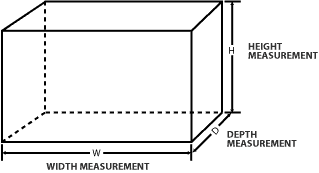Whenever I read this kind of 10″(W)x5″(D)x8″(H) for a product dimension, I am confusing what it stands for and it is hard to imagine from time to time.
Here, for my record, I put this here:

That is basic geometry dimension. 
Whenever I read this kind of 10″(W)x5″(D)x8″(H) for a product dimension, I am confusing what it stands for and it is hard to imagine from time to time.
Here, for my record, I put this here:

That is basic geometry dimension. 
Thank you for your great
content.
It’s easy to understand after you put it that way
thank you so much
Great and Thank you
thanks a lot
LxWxH Makes soooo much more sense.
Length = Width
Width = Depth
Height = Height
How do you get depth when your product is circular
Do you mean like this?
Thanks Sir
Companies and institutions should be careful how to describe these physical dimensions to lay people. First of all, the manner of measurement should make sense to the common person. The dimensions should be described based on the structure in question and the viewpoint of the user. Length (L) = aka. “distance”, as measured from front to back or vice versa; measured away from the user. Width (W) = measured from side to side. Height (H) = measured from bottom to top. Breadth (Br) = ‘Length” replacement for “standing structures” such as people, refrigerators, and tall boxes; from chest to back or vice versa; ex: Br x W x H. Depth (D) = measured from top to bottom. As in swimming pools. Ex: L x W x D. Diameter (Dia) = used for circular-based structures instead of using L x W. Ex: cooking pans, Dia x D. The physical dimensions are always “spelled out” using the L x W x H order even when using variants. L x W x H; L x W x D; Br x W x H; Dia x H; Dia x D; etc. Unfortunately, people will always use what they want.